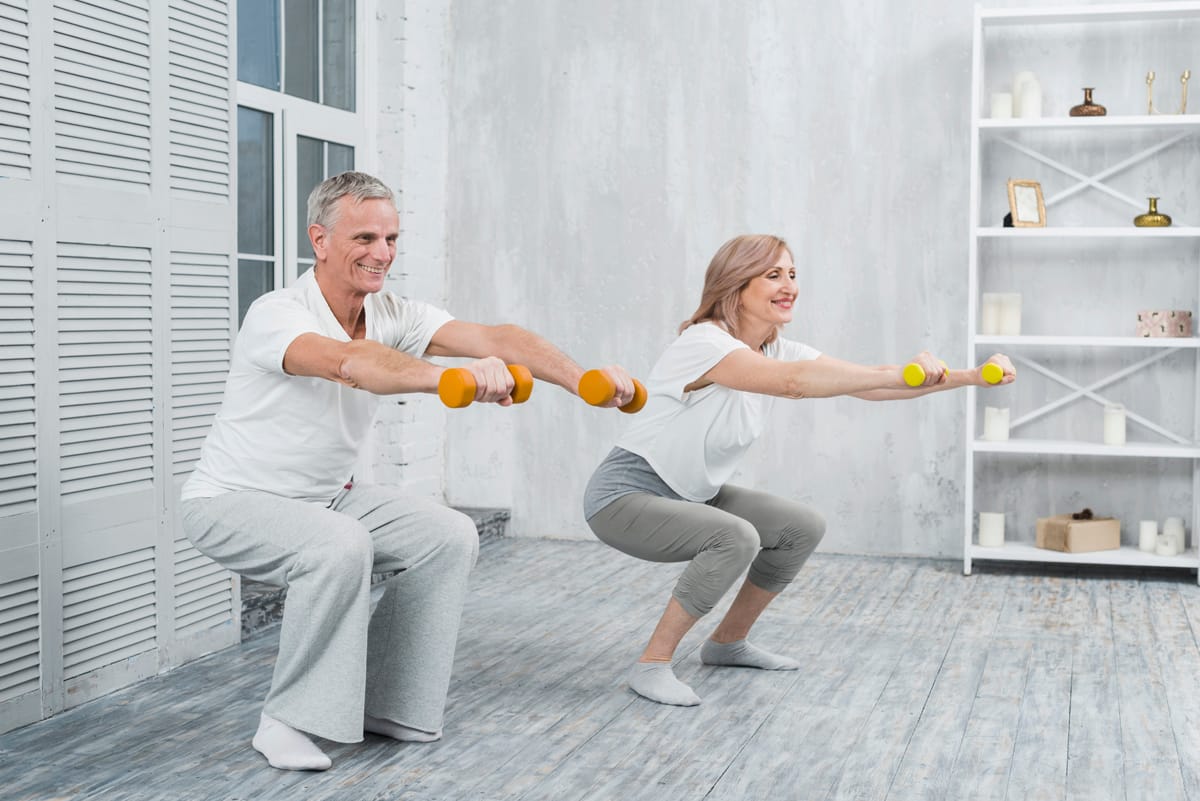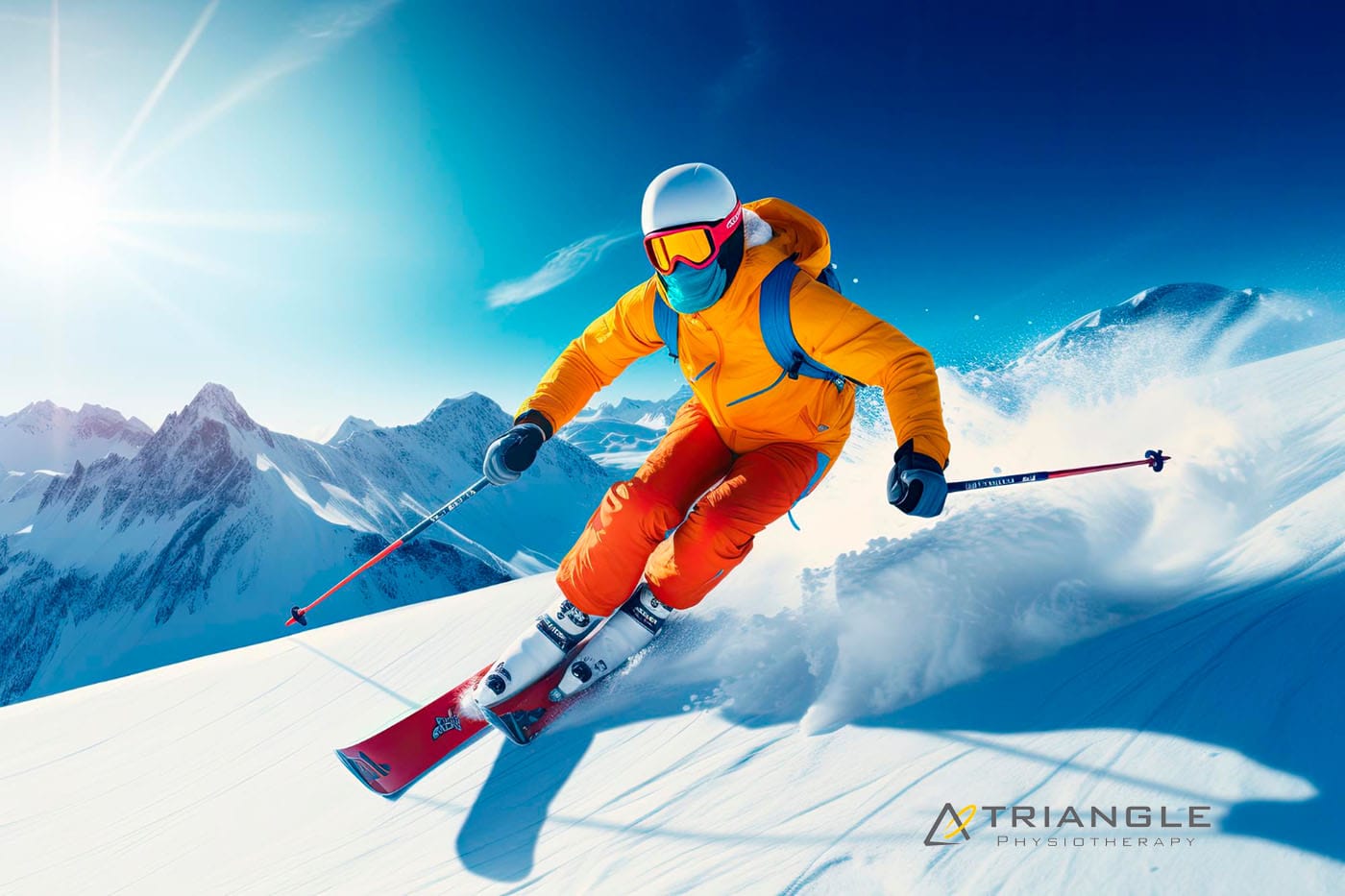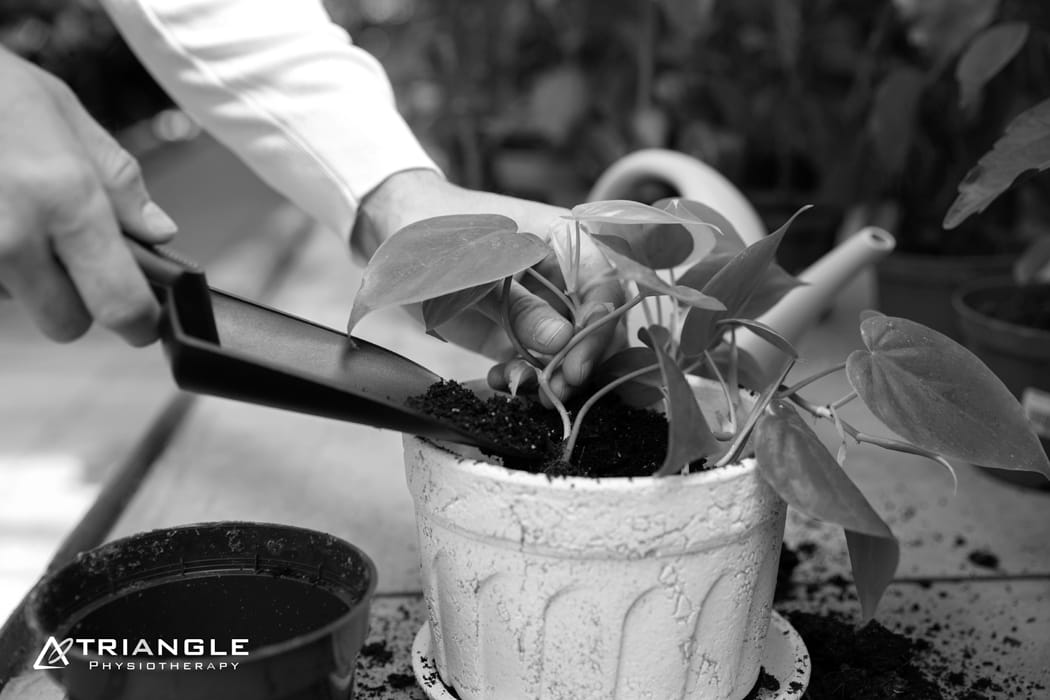Winter weather can be challenging for individuals with arthritis, as cold temperatures and changes in atmospheric pressure can exacerbate joint pain and stiffness. Here are 10 tips to help manage arthritis during the winter months:
- Stay Warm:
- Start your day by using a heating pad or a warm bath or shower to increase the mobility in your joints and reduce pain before you go about your day.
- Dress in layers to trap heat and stay warm.
- Use heated blankets or warm packs on achy joints.
- Protect Your Joints:
- Wear gloves to keep your hands warm and protect your finger joints.
- Use knee-high socks and warm footwear to keep your feet and ankles insulated.
- Stay Active:
- Engage in gentle exercises to keep your joints flexible.
- Consider indoor activities like swimming, which is easy on the joints.
- Maintain a Healthy Weight:
- Excess weight can put more pressure on your joints, so try to maintain a healthy weight through a balanced diet and regular exercise.
- Stay Hydrated:
- Cold weather can lead to dehydration, which may worsen arthritis symptoms. Drink plenty of water to stay hydrated.
- Use Assistive Devices:
- Consider using assistive devices such as canes or braces to reduce the strain on affected joints.
- Manage Stress:
- Stress can exacerbate arthritis symptoms. Practice stress-reducing techniques like deep breathing, meditation, or yoga.
- Warm Up Before Activities:
- Before heading outdoors, warm up your body with gentle stretching exercises to prepare your joints for movement.
- Take Warm Baths:
- Soaking in a warm bath can help soothe joint pain and relax your muscles.
- Consult Your Doctor:
- Keep your healthcare provider informed about changes in your symptoms and discuss any concerns you have about managing arthritis in the winter.

Remember, it’s essential to tailor these tips to your specific situation, as arthritis can affect individuals differently. Always consult with your healthcare provider for personalized advice and treatment options.
How do I book an appointment with a Physiotherapist near me?
Click HERE to book an appointment with a physiotherapist or chiropractor at one of our eight locations.
- Physiotherapy Etobicoke – Triangle Physiotherapy Etobicoke
- Oakville Physiotherapy Clinic – Triangle Physiotherapy Oakville
- Physiotherapy North York – Triangle Physiotherapy North York
- Mississauga Physiotherapy Clinics – Triangle Physiotherapy Mississauga
- Downtown Physiotherapy Clinics – Triangle Physiotherapy King West
- Uptown Physiotherapy Clinics – Triangle Physiotherapy Lawrence Park
- Physiotherapy Clinic Downtown Toronto – Triangle Physiotherapy Queens Quay
- Physiotherapy Clinics Mississauga – Triangle Physiotherapy Erin Mills
“Winter weather can be challenging for those with arthritis, but with the right care, you can manage your symptoms effectively. Triangle Physiotherapy offers expert services across the GTA, including Physiotherapy in Etobicoke, Oakville, North York, Toronto, Lawrence Park, Queens Quay, Erin Mills, Mississauga, and Liberty Village. Our skilled physiotherapists can help you develop strategies to stay active and pain-free during the colder months.”
Running in the winter can be a great way to stay active, but it does require some adjustments to ensure safety and comfort in cold and potentially icy conditions.
Here are some tips for running in the winter:
1. Dress in Layers:
- Base Layer: Moisture-wicking fabric to keep sweat away from your skin.
- Insulating Layer: A warm layer to retain body heat. This can be fleece or a synthetic insulating material.
- Outer Layer: A waterproof and windproof jacket to protect against the elements.
2. Protect Extremities:
- Head: Wear a hat or headband to retain heat. A beanie that covers your ears can be especially helpful.
- Hands: Use insulated, waterproof gloves or mittens.
- Feet: Wear moisture-wicking socks and consider using gaiters to keep snow out of your shoes.
3. Choose the Right Footwear:
- Opt for running shoes with good traction to prevent slipping on ice or snow.
- You can also use traction devices that slip over your shoes for added grip.
4. Stay Visible:
- Winter days are often darker, so wear reflective gear or bright colors to ensure you’re visible to drivers.
5. Warm-Up Inside:
- Warm up your muscles indoors before heading out to minimize the shock of the cold on your body.
6. Plan Your Route:
- Stick to well-lit, well-traveled paths to ensure your safety.
- Avoid areas with heavy snow or ice accumulation.
7. Hydrate:
- Even in cold weather, it’s important to stay hydrated. Cold air can be dry, and you can still lose fluids through sweat.
8. Adjust Your Pace:
- Cold air can make breathing more challenging, so adjust your pace accordingly.
9. Listen to Your Body:
- If conditions are extreme, consider shortening your run or opting for an indoor workout.
10. Post-Run Care:
- Change out of wet clothes quickly to avoid getting chilled.
- Warm up gradually, and consider a hot shower to raise your body temperature.
11. Be Cautious of Ice:
- Watch for icy patches and adjust your stride to reduce the risk of slipping.
- If conditions are icy, consider using traction devices for your shoes.
12. Stay Informed About the Weather:
- Check the weather forecast before heading out, and be aware of changing conditions.
By following these tips, you can make your winter runs more enjoyable and safer. Always prioritize safety and listen to your body, adjusting your routine as needed based on the conditions.
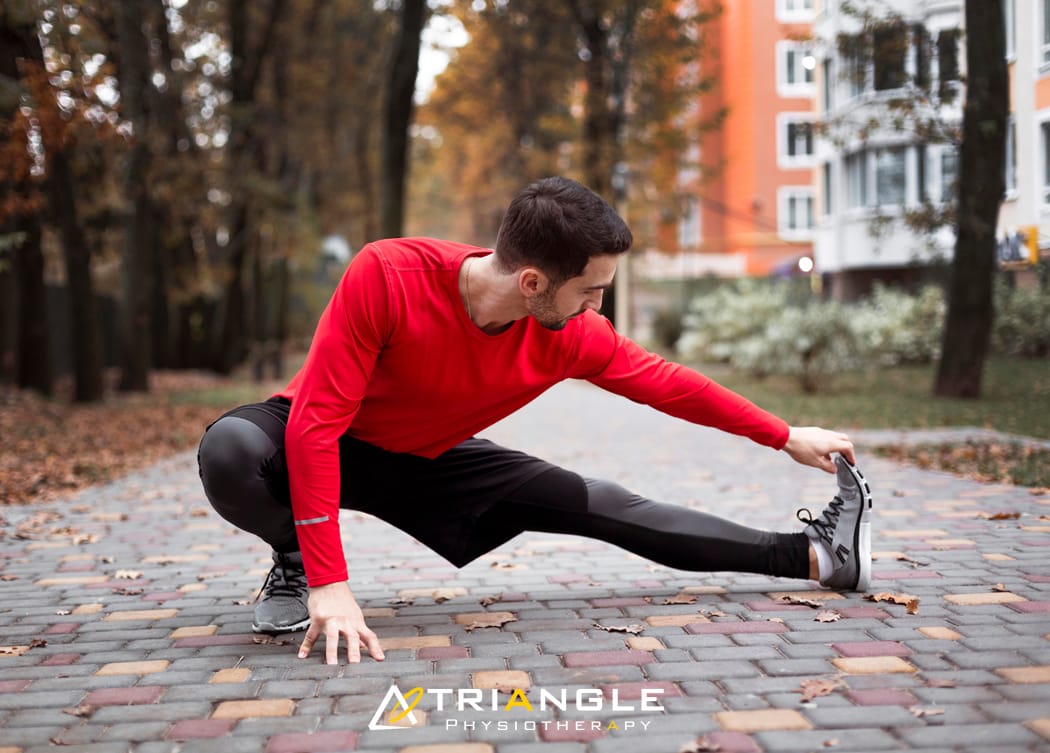
How do I book an appointment for a Running Assessment near me?
Click HERE to book an appointment with a physiotherapist or chiropractor at one of our eight locations.
- Physiotherapy Etobicoke – Triangle Physiotherapy Etobicoke
- Oakville Physiotherapy Clinic – Triangle Physiotherapy Oakville
- Physiotherapy North York – Triangle Physiotherapy North York
- Mississauga Physiotherapy Clinics – Triangle Physiotherapy Mississauga
- Downtown Physiotherapy Clinics – Triangle Physiotherapy King West
- Uptown Physiotherapy Clinics – Triangle Physiotherapy Lawrence Park
- Physiotherapy Clinic Downtown Toronto – Triangle Physiotherapy Queens Quay
- Physiotherapy Clinics Mississauga – Triangle Physiotherapy Erin Mills
“Running in the winter requires special considerations to stay safe and injury-free. Triangle Physiotherapy offers expert services across the GTA, including Physiotherapy in Etobicoke, Oakville, North York, Toronto, Lawrence Park, Queens Quay, Erin Mills, Mississauga, and Liberty Village. Our skilled physiotherapists can help you maintain your running routine throughout the winter with personalized advice and injury prevention strategies.”
Winter is here and the snow is around the corner. The season for skiing is upon us. Whether you are a novice skier or experienced in the sport, there is always a possibility of an injury. This article talks about common skiing injuries and how you can recover from them.
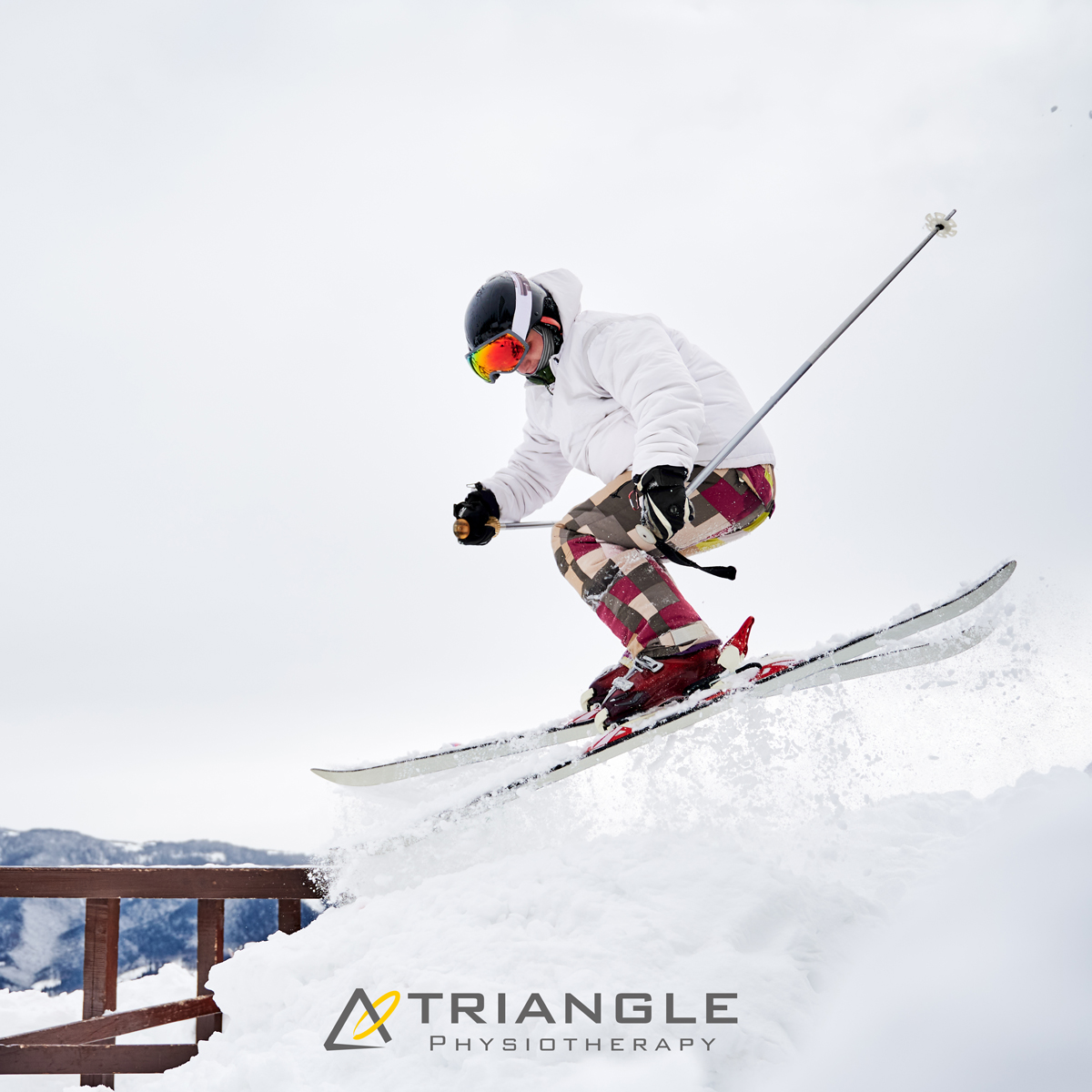
What are some common snow sports injuries?
Some common injuries sustained during skiing are:
Head
- Concussion
- Traumatic brain injury
Neck & Shoulders
- Whiplash
- Fracture
- Torn rotator cuff
- Shoulder dislocation
Back & Spine
- Herniated disks
- Lower back pain
Hand
- Skier’s thumb
- Wrist sprain
- Finger fracture
Knees & Legs
- ACL/PCL rupture
- Meniscus injury
- Fracture
How can I protect my knees while skiing?
Using properly adjusted bindings, maintaining proper ski technique, and conditioning exercises to strengthen the muscles around the knee can help protect against knee injuries.
What is “snowboarder’s fracture”?
Snowboarder’s fracture refers to a fracture of the lateral process of the talus bone in the ankle, usually caused by an inversion injury when landing from a jump.
Are head injuries common in skiing?
Head injuries can occur in skiing, especially in the absence of helmets. Wearing a properly fitted helmet significantly reduces the risk of head injuries.
How do I know if I have a concussion from skiing?
Symptoms of a concussion may include headache, dizziness, nausea, confusion, sensitivity to light, and memory problems. If you suspect a concussion, it’s crucial to seek medical attention.
What do I do after I get injured while skiing?
No matter how minor the injury, it is advisable to seek a doctor or physiotherapist’s advice to make sure it does not get worse. A physiotherapist can assess the extent of your injury. Follow their advice and recommendations for treatment.
When should I seek medical help for a ski injury?
Seek medical help if you experience severe pain, swelling, inability to bear weight, persistent joint instability, or any symptoms of a head injury or concussion. It’s essential not to ignore potentially serious injuries.
How do I book an appointment with a physiotherapist near me?
Click HERE to book an appointment with a physiotherapist or chiropractor at one of our eight locations.
- Physiotherapy Etobicoke – Triangle Physiotherapy Etobicoke
- Oakville Physiotherapy Clinic – Triangle Physiotherapy Oakville
- Physiotherapy North York – Triangle Physiotherapy North York
- Mississauga Physiotherapy Clinics – Triangle Physiotherapy Mississauga
- Downtown Physiotherapy Clinics – Triangle Physiotherapy King West
- Uptown Physiotherapy Clinics – Triangle Physiotherapy Lawrence Park
- Physiotherapy Clinic Downtown Toronto – Triangle Physiotherapy Queens Quay
- Physiotherapy Clinics Mississauga – Triangle Physiotherapy Erin Mills
“Recovering from a skiing injury requires targeted physiotherapy to regain strength and mobility. Triangle Physiotherapy offers specialized services across the GTA, including Physiotherapy in Etobicoke, Oakville, North York, Toronto, Lawrence Park, Queens Quay, Erin Mills, Mississauga, and Liberty Village. Our experienced team is dedicated to guiding you through a safe and effective recovery process.”
Gardening is a favourite activity for many people as the summer season arrives. As healthcare professionals, we understand the importance of gardening in promoting physical health and well-being.
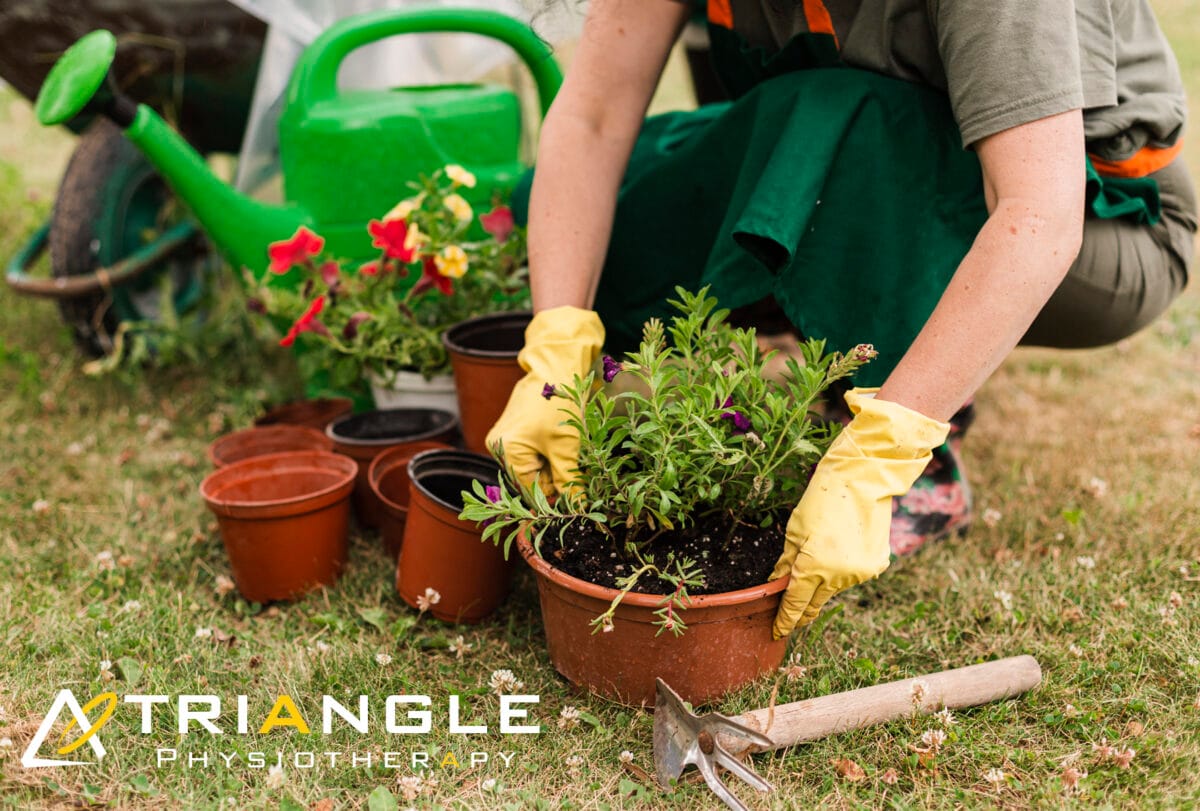
Here are some gardening tips to ensure a safe and enjoyable experience:
- Warm-Up Exercises: Treat gardening as a physical activity and warm up before starting. Perform gentle stretches for your back, shoulders, and legs to prepare your muscles for the tasks ahead.
- Maintain Good Posture: Pay attention to your posture while gardening. Bend from your knees and hips, not your back, to avoid strain. Avoid prolonged periods of bending or kneeling; take breaks and change positions frequently.
- Use Proper Lifting Techniques: When lifting heavy objects like bags of soil or pots, bend your knees, keep the object close to your body, and lift with your legs, not your back. Avoid sudden twisting movements.
- Choose Ergonomic Tools: Invest in high-quality, ergonomic gardening tools that reduce strain on your joints and muscles. Look for tools with padded handles and adjustable lengths.
- Start Slowly: If you’re new to gardening or haven’t done it in a while, start with lighter tasks and gradually increase your gardening time and intensity to build endurance and strength.
- Alternate Activities: Vary your gardening tasks to avoid overusing specific muscles. Switch between planting, weeding, and watering to distribute the workload.
- Garden at Waist Height: If possible, create raised garden beds or use elevated planters to reduce the need for bending and kneeling.
- Use Knee Pads or Cushions: Protect your knees by using knee pads or cushions when kneeling on the ground.
- Stay Hydrated: Gardening can be physically demanding, so remember to drink water regularly to stay hydrated, especially on hot days.
- Take Breaks: Listen to your body and take breaks as needed. Use your break time to stretch and relax.
- Ask for Help: If a task seems too challenging or requires heavy lifting, don’t hesitate to ask for assistance from family members or friends.
- Cool Down and Stretch: After gardening, take a few minutes to cool down and stretch your muscles to prevent stiffness and promote flexibility.
What are some common gardening postures that can lead to discomfort or injury?
Several gardening postures can lead to discomfort or injury if not done with proper form and technique. Some common ones include:
- Bending from the Waist
- Kneeling on Hard Surfaces
- Repetitive Twisting
- Overreaching
- Incorrect Lifting
How can I avoid discomfort while gardening?
To avoid discomfort while gardening, consider the following tips:
- Use Proper Posture
- Take Breaks
- Use Knee Pads or a Kneeler
- Alternate Tasks
- Garden at Waist Height
- Use Ergonomic Tools
- Lift Properly
- Stretch Before and After
Can gardening worsen pre-existing musculoskeletal conditions?
Yes, gardening can exacerbate pre-existing musculoskeletal conditions if proper precautions are not taken. People with conditions like osteoarthritis, back pain, or joint issues may be more susceptible to discomfort or injury while gardening. However, with proper body mechanics, adaptive tools, and awareness of limitations, gardening can still be enjoyed safely. It’s essential for individuals with pre-existing conditions to consult their physiotherapist or chiropractor before engaging in gardening to get personalized recommendations and precautions.
I often experience neck and shoulder pain after a day of gardening. How can I prevent this discomfort?
Neck and shoulder pain after gardening can result from poor posture and overuse of certain muscles. Here’s how to prevent discomfort:
- Maintain Proper Posture: Keep your head aligned with your spine and avoid prolonged forward head posture while working in the garden.
- Avoid Overreaching: Use gardening tools with extended handles to reduce strain on your shoulders. Avoid overreaching when pruning or planting.
- Take Frequent Breaks: Schedule regular breaks during gardening to rest your neck and shoulder muscles.
- Incorporate Shoulder Exercises: Perform shoulder-strengthening exercises recommended by a physiotherapist to improve muscle endurance and stability.
- Warm-Up Before Gardening: Engage in light shoulder and neck stretches to prepare your muscles for gardening tasks.
- Use Proper Lifting Techniques: Lift objects close to your body and use your leg muscles to minimize strain on your neck and shoulders.
- Ice and Heat Therapy: Apply ice to sore areas after gardening to reduce inflammation, and use heat packs to relax tense muscles.
Can gardening worsen my existing back condition? Can physiotherapy help?
Gardening can potentially worsen existing back conditions if proper precautions are not taken. Physiotherapy can certainly help to alleviate back pain and prevent it from affecting your gardening game. Individuals with back issues should consider the following:
- Consult a Physiotherapist: Seek advice from a physiotherapist to assess your back condition and receive personalized recommendations for gardening.
- Avoid Heavy Lifting: Refrain from lifting heavy objects that could strain your back. Use lightweight containers and gardening tools.
- Choose Low-Impact Tasks: Opt for low-impact gardening activities such as container gardening or raised beds to minimize strain on your back.
- Use Assistive Devices: Consider using gardening tools with ergonomic designs or assistive devices to reduce stress on your back.
- Pace Yourself: Take frequent breaks and limit the duration of gardening sessions to avoid overexertion.
- Engage in Back Exercises: Perform back-strengthening exercises prescribed by your physiotherapist to improve the stability and flexibility of your spine.
How do I book an appointment at a Physiotherapy Clinic near me?
Click HERE to book an appointment with a physiotherapist or chiropractor at one of our eight locations.
- Physiotherapy Etobicoke – Triangle Physiotherapy Etobicoke
- Oakville Physiotherapy Clinic – Triangle Physiotherapy Oakville
- Physiotherapy North York – Triangle Physiotherapy North York
- Mississauga Physiotherapy Clinics – Triangle Physiotherapy Mississauga
- Downtown Physiotherapy Clinics – Triangle Physiotherapy King West
- Uptown Physiotherapy Clinics – Triangle Physiotherapy Lawrence Park
- Physiotherapy Clinic Downtown Toronto – Triangle Physiotherapy Queens Quay
- Physiotherapy Clinics Mississauga – Triangle Physiotherapy Erin Mills
“Gardening is a rewarding activity, but it’s important to stay injury-free during the summer. Triangle Physiotherapy offers expert services across the GTA, including Physiotherapy in Etobicoke, Oakville, North York, Toronto, Lawrence Park, Queens Quay, Erin Mills, Mississauga, and Liberty Village. Our experienced physiotherapists can help you prevent and manage injuries, ensuring that you can enjoy your gardening activities all season long.”

